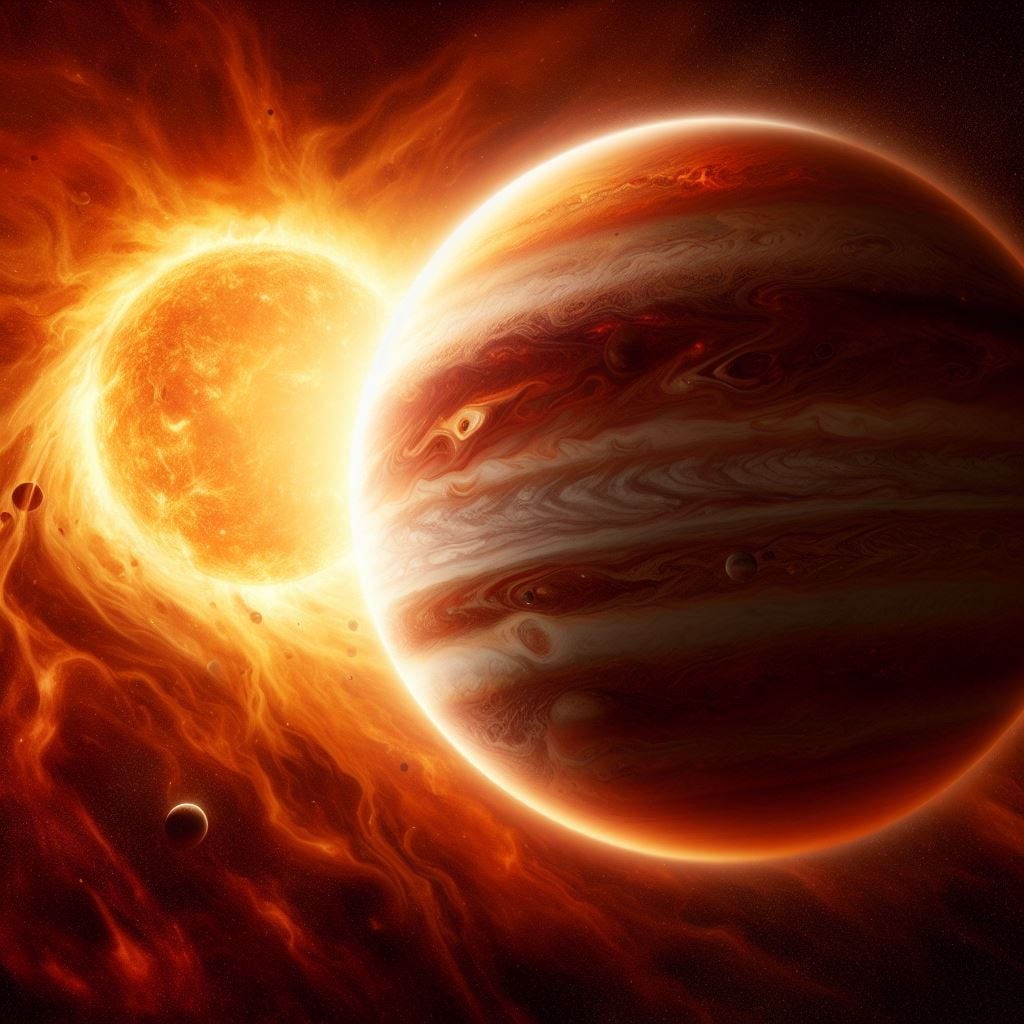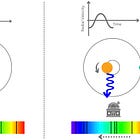Hot Jupiter planets disappear over billions of years
Stars like the Sun that are many billion years old appear to host fewer close-in Jupiter sized planets than stars that are similar but younger, new study suggests
Imagine grabbing Jupiter and moving it much closer to the Sun, so that it completes a full orbit around the Sun in only a few days rather than, like Jupiter, in 12 years. Such planets do not exist within our own solar system, but have been observed around other stars. Due to their unusual properties, their origin remains debated. A new study has suggested such planets appear less common around older stars than around their younger counterparts, implying these so-called hot Jupiter planets may have a finite lifespan.
The closest planet to our Sun is Mercury, which completes its orbit around the Sun in 88 days. That’s much faster than Neptune, which is much further away from the Sun and takes about 165 years for one orbit. A different way to think about it: a birthday on Earth takes 365 days, but on Mercury we could all celebrate many more birthdays and on Neptune most of us would never even turn one year old!

If you love birthdays, you can do even better outside the solar system. Some exoplanets orbit extremely close to their star. On Kepler-78b, a typical example of an ultra-short period planet, an orbit takes only 8.5 hours — roughly 1000 times more birthdays than on Earth. On the flip side, such planets are several thousand degrees hot — hotter than a blast furnace so that on these planets even steel would melt and they wouldn’t make a great holiday destination!
Another class of planets that orbit much closer to their stars than Mercury does to the Sun are the ‘hot Jupiters’. These are planets that are roughly the size of Jupiter, but with orbital periods of only about one to ten days (because they are so close, they receive much more radiation than the Jupiter does, hence their name).
Hot Jupiters are inextricably linked with the field of exoplanet research. The very first1 exoplanet discovered around a solar-type star, 51 Peg b, is a planet half the mass of Jupiter which orbits its star in 4.2 days. This pioneering discovery by Michel Mayor and Didier Queloz was later awarded the Nobel Prize in physics.
Since the discovery of 51 Peg b in 1995, many more hot Jupiters have been detected. Astronomers have learned that hot Jupiters are actually relatively uncommon compared to other types of planets — only about 1% of stars like the Sun contain a hot Jupiter planet. It is nevertheless not a coincidence that the first exoplanet discovery was a hot Jupiter, because even though we now know they are relatively rare, such planets are easier to detect compared to most other planets (see Explainer).
Hot Jupiter planets were unexpected. At orbits so close their stars, astronomers did not expect giant planets could form — there simply wasn’t thought to be enough gas and dust, the building blocks of planets, to form such planets. The discovery of hot Jupiters therefore came as a surprise and quickly influenced planet formation models — until then those models were based on the only available example of a planetary system, i.e., the solar system. Now, the most widely accepted theories suggest hot Jupiters have formed much further away from their star than where they are currently observed, and have subsequently migrated inward.
Even today, their formation remains poorly understood and multiple formation and migration models remain plausible candidates. While theorists work on improving these models, observers continue to bring this class of planets into ever clearer view. A recent study showed that even stars much smaller than the Sun can in some rare cases host hot Jupiters — a puzzling finding we recently wrote about at the Extrasolar Times which challenges formation models.
A recent study by Shota Miyazaki and Kento Masuda compared the population of hot Jupiter planets to the properties of the stars around which they orbit. Importantly, they age-dated the stars in the same way, using data from the same astrophysics survey. Using these homogeneous data, the authors found that older stars seem to be orbited by fewer hot Jupiters than younger stars.
Our Sun is approximately 4.6 billion years old. Most stars in the universe are similarly several billion years old, with some stars younger and others older — though determining the exact age of a star is challenging. The effect the authors see takes place on timescales of billions of years: stars that are ‘only’ about 1 billion years old host considerably more hot Jupiters than stars that are about 10 billion years old. This measurement is complicated by several confounding variables, as stars of differing ages may also have a different metal-content or mass, and these parameters are also thought to affect the formation of hot Jupiters. However, the authors attempt to take these other parameters into account and find evidence for an age-dependence even after doing so.
To interpret the findings, the authors suggest the most likely explanation involves tides. Tidal forces, which on Earth are responsible for the rise and fall of sea levels, can cause the orbits of planets to shrink over time. Dr Kento Masuda, Assistant Professor at Osaka University and co-author of the study, said to the Extrasolar Times that this may ultimately cause the planets to crash into their stars and disappear:
"The possibility that Hot Jupiters may spiral into the central star due to tides raised on it has been discussed since the discovery of 51 Peg b, but it has long remained unclear on what timescale this might occur. Recently there is growing observational evidence suggesting that the orbital decay of hot Jupiters indeed occurs during the lifetime of their host stars, and our work provides further support for this view."
The effect of tides is more pronounced when two bodies are in a close orbit, so planets further away should be less affected (the study finds that far away or ‘cold’ Jupiters appear to be as common around older and younger stars). Stellar tides may be responsible for shrinking the orbits of hot Jupiters over time, until they are ultimately engulfed within the star. But not until after billions of years — or hundreds of billions of birthdays on these planets.
The new findings are led by Shota Miyazaki and Kento Masuda and are accepted for publication by the Astronomical Journal. A preprint is available online.
The story of who discovered the first exoplanet is itself an intriguing one and it depends on what you call first and what you consider an exoplanet — the full backstory is described in this Scientific American blog post by Prof Josh Winn, Professor of Astrophysical Sciences at Princeton University.





